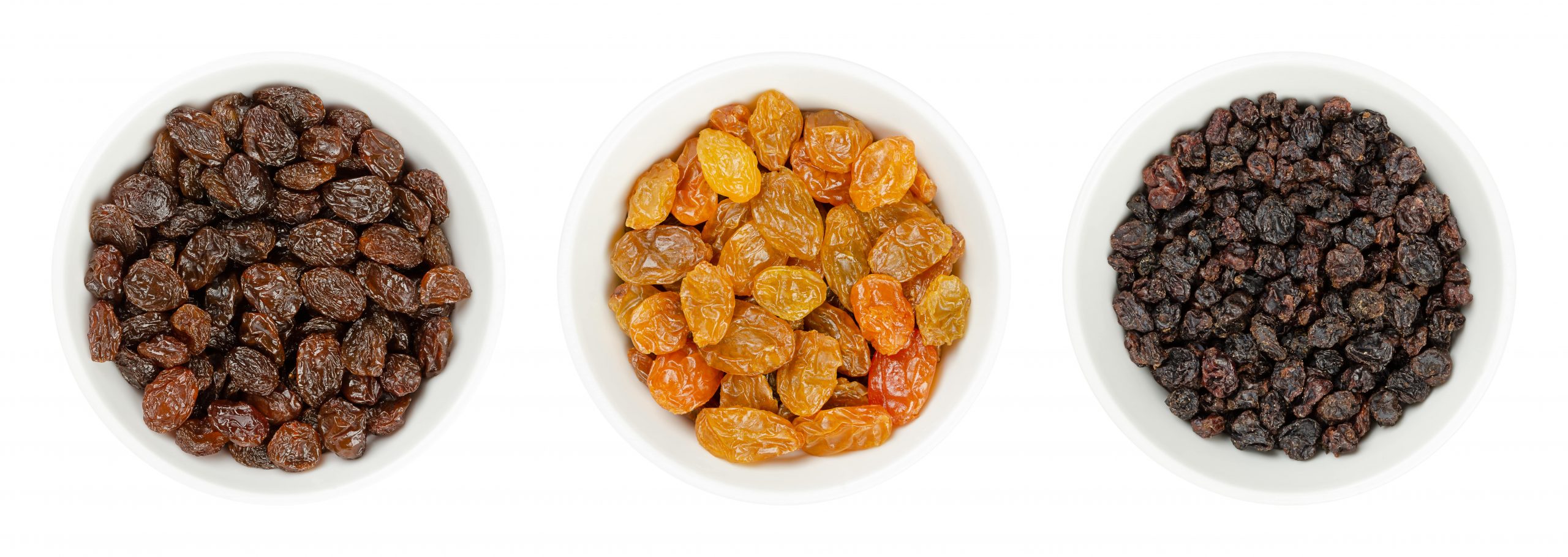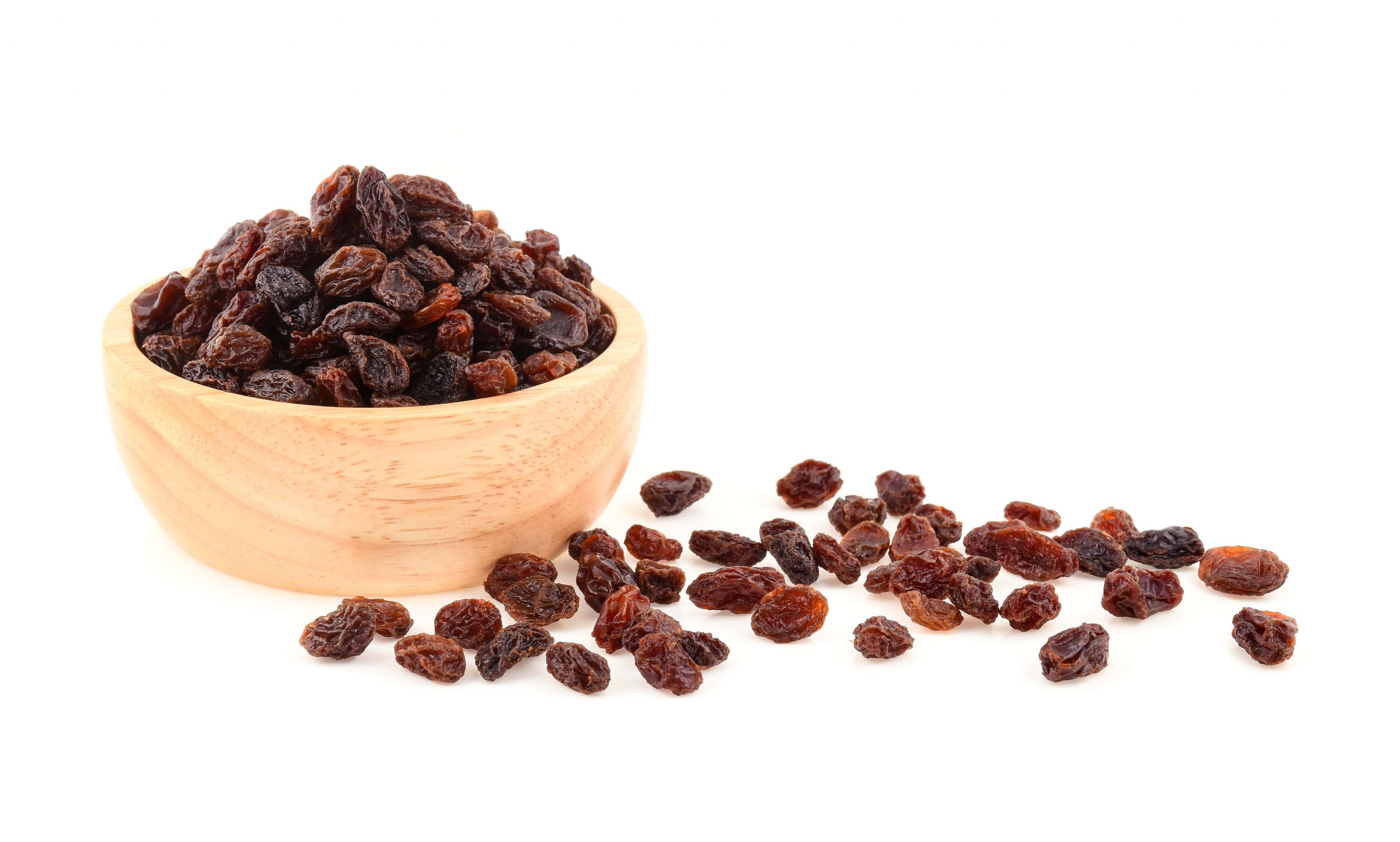Currants, sultanas, and raisins are known dried fruits variants. They are loaded with vital antioxidants, minerals, and vitamins, utilized in various cuisines globally.
Despite being known in terms of nutrient content, some people cannot differentiate them. It is challenging and confusing to understand their differences, particularly sultanas and raisins, which differ in definitions globally. For instance, in the United States, “raisin” refers to both sultanas and raisins. In an attempt to differentiate the two, sultanas are called “golden” raisins. However, in other countries like UK, sultanas, and raisins are distinguished by considering the processing method and the variety of the grape. The word “currant” is used in the gooseberry family like black and red currant. This blog will discuss their differences using international definitions to remedy this confusion.
Definition
Sultanas
Sultanas are produced from green grapes (seedless), especially the Thompson type. They contain an oil-dependent solution before drying to hasten the process. Consequently, they have a lighter color than currants and raisins. In Australia, certain sultanas are produced without the drying liquid. The grapes spend more timedrying, approximately three weeks, and have a dark brown color. Most people refer to them as “natural” sultanas, “sultana raisins,” or “golden raisins,” specifically in the United States. Their lighter color is retained by soaking them in a preservative known as Sulphur dioxide. Additionally, sultanas are smaller and sweeter than raisins, have lighter colors, and are juicer than currants and raisins.
Raisins
Raisins are grape variants that have undergone drying for about three weeks. These grapes have a dark brown color, which darkens as drying continues. Raisins are made with different types of grapes. For example, raisins in the United States are produced from Thompson seeds. Nevertheless, raisins are specifically produced from wider grapes, including Waltham Cross, Lexia, and Muscat, bigger than sultanas. These grapes have a delicious flavor, soft texture, dark color and are bigger than currants and sultanas.
Currants
Currants are dried, tiny grapes often called “Zante Currants.” Regardless of their name, they are produced by drying “carina” and Black Corinth,” which are seedless and tiny grapes. Currants were initially cultivated within the Mediterranean region and are utilized in producing raisins. Greece leads in the production of these grapes. Australia, South Africa, and California also grow them, however, they take 3 weeks to dry. Due toitstiny size, it contains a delicious, intense, and tangy odor and adds sweetness and texture to both savory and sweet dishes.
Nutrient Value
All three variants of dried grapes have a high nutritional profile. This is contributed by drying, where water de-escalates from 80 to 15%. As a result of drying, they reduce in size, raising the nutritional content. These dried grapes have higher vitamins, minerals, and fiber than fresh ones. Sultanas have the highest calorie and sugar amounts than others. The quantity of protein, vitamins, potassium, fiber, and carbohydrates isnearly equal. They all contain plant compounds and antioxidants at significant levels and are rich in vitamin K and C, and have 0% fat. However, vitamin K and C quantities are higher in fresh grapes than dried ones.
Health Aids of Dried Grapes
Currants, sultanas, and raisins are essential in the growth and development of your body.
- They have high fiber amountsthataid in lowering diabetes, heart disease, and high blood pressure risks and restrain it. Dried grapes increase satiety which aids in shedding weight, reducing blood pressure heart disease risks, and boosting blood sugar hence lowering type 2 diabetes risks. Fiber also supports digestion by bulking up and softening stool, inhibiting constipation. This nutrient also lowers the “bad” cholesterol (LDL) levels and colorectal cancer.
- Have significant levels of antioxidants. These dried grapes include polyphenols, antioxidants that guard the body cells against harmful damage resulting from oxidative stress and free radicals. Additionally, they fight inflammation and several deadly diseases like cancer.
- Currants, sultanas, and raisins are rich in iron. This mineral serves a vital role in producing red blood cells and transporting oxygen to all body cells. Iron deficiency causes anemia, cold, tiredness, and unwellness.
- These dried grapes also have calcium and small amounts of boron essential in tooth and bone health. Currants, sultanas, and raisins help inhibit osteoporosis and maintain health in your joints and bones. Furthermore, they have significant copper, manganese, vitamin B6 and potassium.
Uses
Currants, sultanas, and raisins are versatile, implying that they can be utilized in various diets. You can choose to consume them as snacks or raw. Interestingly, a few individuals incorporate them into salads, bakery items, oatmeal, and rice. Although dried grapes vary in size, color, and taste, they can be added to your food.
- Oatmealis healthy but tedious sometimes. To improve the porridge’s tangy flavor and natural sweetness, a person can add dried currants, sultanas, and raisins.
- Cheese platters withraisins are the best combination. Additionally, it couples with crackers and nuts too.
- Snacks with raisins are suitable for consumption during the morning and afternoon. People take it raw, plain, or blend with nuts and yogurt in case they seek a better-balanced diet.
- Salads spiced with currants are incorporated into food to balance the diet. They specifically add textures and sweetness to salads. Alternatively, you can combine bitter, crunchy, and green nuts with currants to improve the salad.
- Savory dishes with dried currants, sultana fruits, and raisins can be a portion of good food. Nevertheless, currants fit best due to their reduced size.
Conclusion
Although sultanas, currants, and raisins are rich in nutrients, they differ slightly based on their taste, texture, color, and size. Interestingly, these dried grapes can be utilized to replace one another. Additionally, they contain multiple antioxidants, potassium, vitamins, minerals, and fibers. They have various uses, including oatmeal, salads, savory dishes, cheese platters, and snacks because they are sweet. These dried fruits have various health benefits like weight loss, boosting digestion, and improving blood pressure and sugar. Your choice depends on the taste preference or recipe desired. However, they contain high sugar amounts. Therefore, moderate quantities should be consumed to avoid health risks.
- Eye Spy: Worldwide Eye Color Percentages - April 19, 2024
- Elevate Energy, Soothe Stress, And Peak Performance with The New UNBEETABREW Coffee Sensation - September 21, 2023
- Chef Bob’s Coffee: A Journey Fueled by Passion - July 29, 2023







